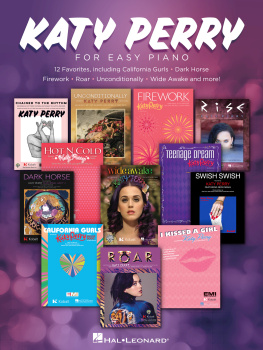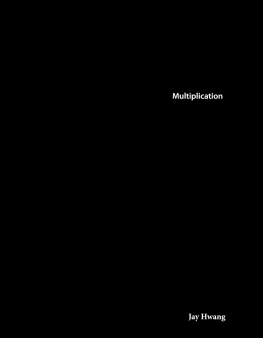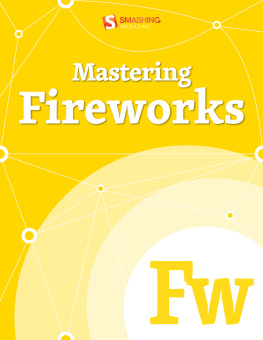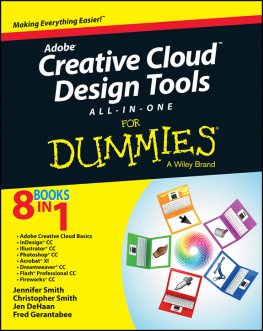This book is dedicated to the memory of Mark Blanch, my cousin, who was the last of the Blanches directly involved in Brockham Bonfire, and who sadly succumbed to pancreatic cancer during the preparation of this book; and to the memory of Dr Takeo Shimizu, who taught so many people so much about the art and science of fireworks and who died at the age of 98, just before this book was completed.
Foreword
Tom Smith is to be congratulated on putting together this delightful book on the theme of firework displays. Aimed at display firers, both amateur and professional, this book covers an impressive range of theoretical and practical topics, making it unique in the fireworks literature.
Tom brings enormous experience in the fireworks industry, including a period as display manager of Kimbolton Fireworks, during which time Kimbolton won several firework competitions. More recently he has acted as a consultant for the London Millennium celebrations, the Athens Olympic Games, and the Melbourne Commonwealth Games. Together with his co-authors, Tom has assembled a truly comprehensive treatise, covering almost every aspect of firework displays, from a taxonomy of fireworks to display design, and from firework competitions to environmental impact. The chapter on risk assessment is particularly valuable, and emphasises the crucial distinction between risk and hazard, as well as adopting a very practical approach to the overall evaluation of risk.
For amateur firers the book will prove to be especially valuable. Amateurs often lack the support network, as well as the formal and informal apprenticeship opportunities, afforded to the professional. Access to the wealth of experience and information captured in this book can only lead to improved safety levels and to enhanced artistic content in amateur displays.
Beautifully illustrated, the book is also well written and a pleasure to read. Even the topic of legal issues, a subject with plenty of soporific potential, is leavened with ample personal interpretation and perspective. As a relative newcomer to the world of firework displays, I found the book to be hugely informative. This superb and comprehensive text undoubtedly has a place on the bookshelf of anyone interested in fireworks and firework displays.
Professor Chris Bishop
Vice President, The Royal Institution
Distinguished Scientist, Microsoft Research
March 2011
Acknowledgements
Firstly I would like to thank my co-authors for all the hard work and patience they have shown. Thanks are also due to Jacob, my son, for assistance in preparing the diagrams of firework types, to Ron Lancaster for whom I worked for some 20 years as a part-time firer and then as Display Manager of Kimbolton Fireworks and who suggested the production of this book. Also to Dr Elizabeth Gilmour for her advice on medical matters and to Ben Carr and his colleagues at Chemical Publishing, my ever-patient publisher, and to David Cottingham for some inspired copyediting and corrections any mistakes remaining are all down to me.
Finally, thanks are due to Helen my wife, Charis my daughter and Avril my secretary for their encouragement, proofreading and other helpful suggestions.
Photographs and images
Except where shown, photographs have been taken by the authors or are no longer attributable. If any reader can prove ownership of unattributed images we apologise and will be pleased to acknowledge them in subsequent editions.
Terminology
The following terms are used generally within this book without further definition.
Firing area | The area, or areas, in which the fireworks are set up |
Display | The moment from the firing of the first firework to the extinguishing of the last |
Fallout area | The area in which debris from the fireworks performing normally falls |
Safety distance | The distance at which the risk to the audience or other features is reduced to an acceptable level it is not a safe distance |
Operator | The person or people who actually fire the firework display whether that be in close proximity (by manual firing) or remotely (normally by electrical firing) |
Audience | The people who watch a firework display wherever they may be situated |
Author notes
Tom Smith Dr Tom Smith was introduced to fireworks by his grandfather, Jack Blanch, who was at school with and subsequently worked with members of the Brock family in the early 1900s.
Following his doctorate in chemistry from the University of Oxford, and a spell as research chemist and computer lecturer, Tom took up a full-time post as display manager with Kimbolton Fireworks in the UK, during which time the company won several firework competitions and staged some of the largest displays seen in the UK to date. In 1998 Tom left to establish an independent explosives consultancy, Davas Ltd, working worldwide on events such as the London Millennium celebrations, the Athens Olympic Games and the Melbourne Commonwealth Games as well as acting as advisor to major firework displays and explosives companies around the world. Recent firework display projects include acting as consultant to the London and Hong Kong New Years Eve celebrations.
In addition, Tom represents the UK on a number of International Working Groups, including the development of European Standards for professional fireworks.
Davas Ltd now publishes the internationally recognised Journal of Pyrotechnics and delivers courses in Pyrotechnic Chemistry around the world.
Chris Pearce Obtained his MSc at the University of Birmingham and, following an early career in teaching, entered the firework industry full-time in 1997. Chris is now Managing Director of Jubilee Fireworks Ltd one of the UKs leading display companies. He was Chairman of the British Pyrotechnists Association for a five-year period and Deputy Chair of TESA (The Event Services Association). Chris contributes regularly to various academic and popular journals and oversees the BPAs Training and Examination scheme. He has been adjudicator and technical consultant for the British Musical Fireworks Championships since 2004.











